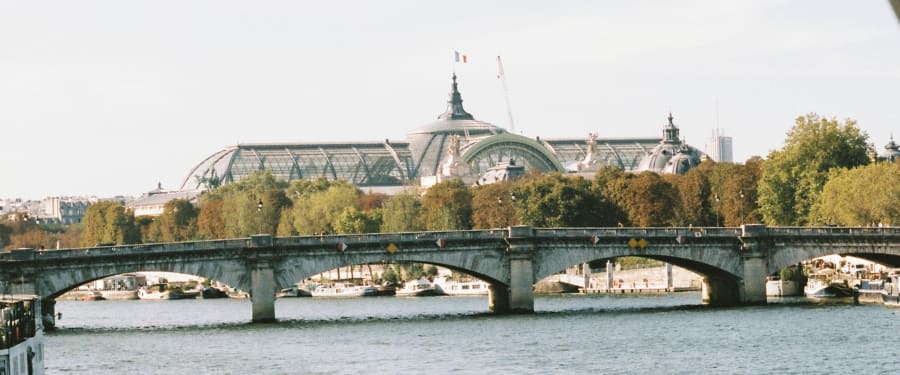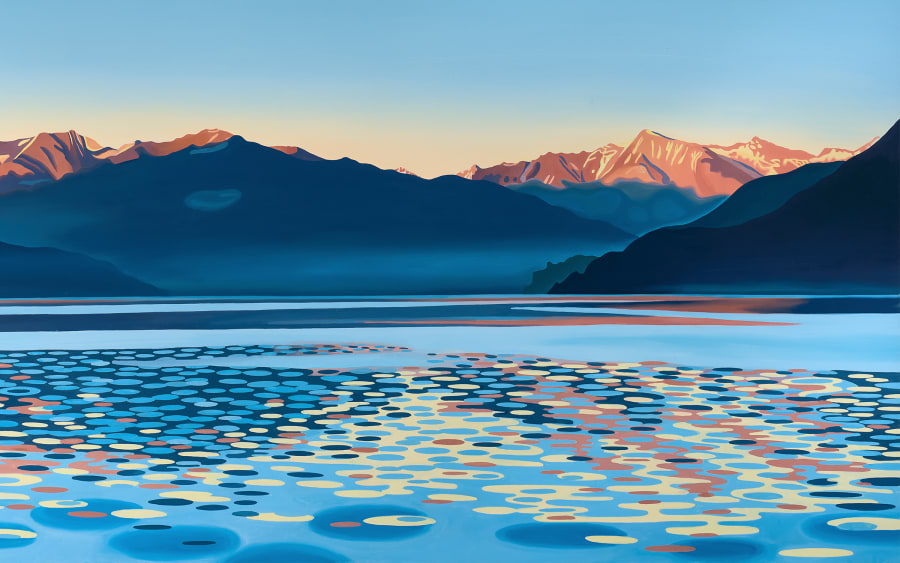In the French – and European – contemporary art calendar, the Lyon Biennale is one of the most eagerly awaited events of the fall. For its 17th edition, it expects to welcome, as in 2022, some 270,000 visitors. The biennale also invites visitors to explore the remarkable architectural heritage of France’s third-largest city. ‘I’m very attached to this reference to history, which is illuminated by contemporary creation,’ says artistic director Isabelle Bertolotti, while pointing out that the event now extends throughout the region.
Co-created in 1991 by Thierry Raspail, and directed by Bertolotti since 2019, the Lyon Biennale has never ceased to evolve under the impetus of its various guest curators. Alexia Fabre, director of the Beaux-Arts de Paris, succeeds last year’s duo, Sam Bardaouil and Till Fellrath. The biennale is also shaped by its venues, which often reflect the importance of industry in the Lyon region. After La Sucrière, a 1930s warehouse, and Usines Fagor, a former household appliance factory, the Grandes Locos will host this year’s event (from September 21, 2024 to January 5, 2025).
This 17th edition of the biennial, which brings together works by around 80 established and emerging artists, is not solely confined to the gigantic train sheds. Its itinerary is intended as a pretext for (re)discovering the city, from north to south, encompassing the Musée d’art contemporain (macLYON); the Musée gallo romain in Saint-Romain-en-Gal; and the Cité Internationale de la Gastronomie, in the former Hôtel-Dieu hospital, among others.
The biennale’s local roots are also reflected in its ability to produce two-thirds of its works on site, some of them based on specific know-how. Mona Cara’s textile piece, for example, is created in collaboration with the Hôtel de la Dentelle in Brioude and the jacquard weavers of Charlieu. This mobilization of goodwill and skills, project by project, contributes to making possible an event themed this year under the title ‘Les voix des fleuves / Crossing the water’. As we all know, it is the little streams that make the big rivers...
‘The biennale’s geographical influence continues to expand,’ says Isabelle Bertolotti. Its ‘Résonnance’ program, launched in 2003, gives visibility to the region’s network of art centers, galleries, and associations. From around 30 events in 2003, by 2022 it had grown to over 250 exhibitions, performances, concerts, screenings, and shows. Among the highlights of this year’s edition is ‘Tilia’ organized by the artists’ residency program Moly-Sabata, situated on the river to the south of Lyon. The exhibition features work by Huma Bhabha, Wang Keping, Laurent Le Deunff, Oscar Tuazon, and others. ‘We’ve mixed in-residence productions with loans of works and a previously unseen collection of 20th-century furniture made in the region,’ explains curator Joël Riff.
On the outskirts of Lyon, the Institut d’art contemporain (IAC) in Villeurbanne produces and hosts ‘Jeune création internationale’. The initiative is a collaboration between the Lyon Biennale, the IAC, MacLYON, and a local art school, this year the École supérieure d’art Annecy Alpes. Ten emerging artists – drawn equally from the regional and international scenes – are invited to devise a project.
Created in 1998 after the merger of the Frac Rhône Alpes and an art center housed in a former school in Villeurbanne, the IAC is currently awaiting the appointment of its future director. However, since the territorial reforms of 2015, there are now two Fracs present in the region. In addition to the IAC, the Frac Auvergne, based in Clermont-Ferrand, is scheduled to move into the Halle aux Blés in 2025, a downtown building that was supposed to open to the public in 2023, but whose inauguration has been postponed. The region’s former president, Laurent Wauquiez, wanted to review the project so that the organization, known for its collection of contemporary painting and photography, could organize ‘very high-level exhibitions’ in this new venue. In 2017, a selection of works from the collections of the IAC and Frac Auvergne were the subject of a joint exhibition in Clermont-Ferrand, entitled ‘Le divan des Murmures’ (‘The Whispering Couch’). This rapprochement between the two Fracs may well have been a premonition, as the region is considering the possibility of bringing them together under a single administrative umbrella.
Sandwiched between the Alps, the Vercors, and the Chartreuse mountain ranges, Grenoble is another city in the region well worth the trip for its fine museum collections. Sébastien Gokalp was appointed head of the Musée de Grenoble last January, tasked with drawing up a new cultural and scientific project and defining its strategic orientations. ‘Coming to the Musée de Grenoble,’ says Gokalp, ‘is like visiting the Louvre, but without the queue.’ The joke is not unfounded: the discreet municipal museum boasts exceptionally rich collections, ranging from Egyptian artifacts to works by Modern masters such as Chagall, Matisse, and Picasso. The success of its programming bears witness to this: a monographic exhibition devoted to the Catalan master Joan Miró, which has just closed its doors, attracted 90,000 visitors. By way of comparison, the Grenoble-Alpes metropolis has a population of around 449,000.
The museum, which benefits from a comfortable acquisitions budget (partly funded by members of its patrons’ club), remains attentive to contemporary production. ‘It’s important to watch art in the making,’ stresses Gokalp, who is keen to bring the collection to life by inviting contemporary artists to exhibit alongside it. Across the city, the program at Le Magasin – Centre National d’Art Contemporain, directed since 2022 by Céline Kopp, offers a contemporary counterpoint to – or perhaps a foretaste of – what the Musée de Grenoble has in mind: after a retrospective by Julien Creuzet, the venue is hosting a solo show by Benoît Piéron (until October 10, 2024).
Further east, in Saint-Étienne, the Musée d’art moderne et contemporain (MAMC+) is getting ready to reopen its doors on November 9, after more than a year and a half of renovation work. However, the transformation of this flagship venue has only just begun: ‘A second phase of work will now focus on the storerooms,’ explains director Aurélie Voltz, while also raising the prospect of a possible extension to the museum. The building – with its emblematic black ceramic façade, designed by Saint-Étienne architect Didier Guichard – will be more functional, better insulated, and air-conditioned; it will also regain its zenithal light, filtered by textile sails, and offer an improved visitor itinerary. The next phase of renovation will focus on the collection and its storerooms (the museum has 23,000 works covering a period ranging, for the most part, from the 19th to the 21st centuries). ‘At the MAMC+ in Saint Étienne, as in Grenoble, very astute curators have shaped the museum of the 20th century, and thanks to them we have inherited fabulous collections,’ says Voltz.
Throughout its history, the museum has benefited from numerous donations from artists and their beneficiaries, gallery owners, and collectors. ‘Brand New!’, one of the four reopening exhibitions, features a collection of previously unseen works by contemporary artists such as Alain Kirili, as well as lesser-known figures such as the painter Max Wechsler (1925-2020), who moved from figuration to radical abstraction. ‘Hors Format’ will showcase monumental paintings from the collections (including two superb paintings by Frank Stella), something facilitated by the very high ceilings of the exhibition rooms. ‘The next step will be to extend the building,’ adds Voltz, ‘We’re thinking today about the museum of tomorrow.’
Anne-Cécile Sanchez is a freelance journalist and editor based in Paris. She is a regular contributor to Le Journal des Arts and Projets Médias.
All photos by Baptiste de Ville d'Avray for Art Basel.
Caption for top image: The Rhône river in Lyon.


